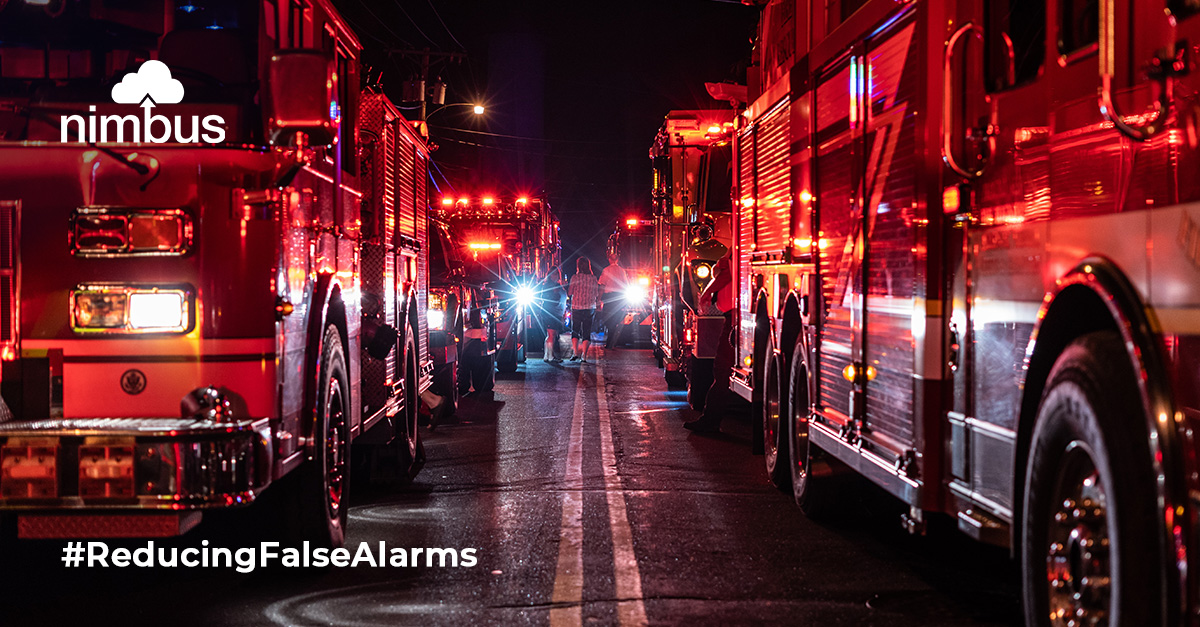A modern approach to fire alarm systems
Every facility or property manager recognises their core responsibility to keep people and property safe.

In the field of fire safety, the fire alarm signal is a critical connection between fire systems and the necessary rapid response to prevent disaster. Yet this system is not without its challenges. Each year, the Scottish Fire and Rescue Service (SFRS) grapples with over 28,000 false alarms from workplace automatic fire alarms (AFAs). These Unwanted Fire Alarm Signals (UFAS) present a significant issue, not just for Scotland but throughout the UK.
A variety of factors contribute to the high incidence of UFAS, ranging from system malfunctions to unintentional human errors. Regardless of the cause, each false alarm demands considerable resources, time, and operational readiness. Consequently, fire brigades are now implementing new and sometimes controversial strategies to manage the problem.
From 1st July 2023, the SFRS has implemented a new model for responding to AFAs. This approach, developed after a 12-week consultation and in the face of much public opposition, will challenge all AFAs from non-domestic premises unless there is concrete evidence of a fire. The goal is to reduce UFAS by more than 50%, freeing up capacity for crucial areas such as staff, fire prevention work and, of course, genuine callouts.
As the landscape of fire safety management evolves, so too much the solutions that support it. Remote fire alarm management systems, characterised by their ability to provide real-time monitoring, testing, fault identification, and rapid rectification, present a here-and-now solution to address the false alarm issue. One such example is our own Nimbus Gateway platform, which demonstrates how cloud-based technology can help manage fire systems and reduce false alarms.
Maintaining fire systems across multiple locations is a considerable challenge. This is where the benefits of advanced remote fire alarm management systems come to the fore. They provide 24/7 access to fire protection system notifications and proof of testing. This increased visibility and control can significantly reduce the risk of fire and ensure compliance without adding to the workload of facilities managers building owners, and employers.
They can provide building managers and fire engineers with complete visibility of critical fire protection systems across an entire property portfolio. Users can select fire panel events that are important to them and receive a notification on their mobile device immediately when an event happens. This real-time information allows rapid response to potential issues, reducing the likelihood of false alarms and ensuring prompt action in the event of a real fire.
Remote fire alarm management systems also streamline maintenance and commissioning activities, allowing fire engineers and installers to deliver new and enhanced services to their customers. Apps like the Nimbus Engineer App allow an on-site engineer to easily record test results, significantly reducing their time on site by enabling single-person testing. The app automatically logs tests and offers unequivocal proof of testing with time and date stamps. These features allow more efficient and effective maintenance of fire alarm systems, further reducing the potential for false alarms.
Preventative maintenance is a cornerstone of reliable fire systems. Regular testing and inspections can identify and rectify potential issues before they escalate into problems that could trigger false alarms. An effective remote fire alarm management system aids in the planning and execution of these crucial tasks.
These systems are an invaluable tool for facilities managers and building owners, providing a comprehensive overview of their fire systems. From a single interface, users can monitor the status of every fire panel across multiple locations, enabling them to promptly identify and address any emerging issues.
Moreover, many remote fire alarm management systems are equipped with features that can help organise and simplify maintenance routines. Notifications for pending tests and detailed reports on the condition of the system enable a proactive approach to maintenance. This results in a well-tuned system, significantly reducing the chances of a false alarm.
Active monitoring is another key advantage of remote fire alarm management systems. These systems provide real-time updates on the status of fire alarm systems, including notifications of any activations. This allows for immediate investigation and confirmation of whether the activation is due to a genuine fire incident or a false alarm.
Furthermore, in the event of an alarm, a remote fire alarm management gateway can provide vital details that can help determine the nature of the incident. Information on the location of the activated alarm, the condition of other detectors in the area, and any recent maintenance or fault issues can help quickly assess the situation.
In the era of reduced AFA fire brigade callouts, active monitoring through remote fire alarm management provides an effective solution. It ensures that genuine fire incidents are promptly reported to the fire brigade, while false alarms can be quickly identified and dismissed, minimising disruption and maintaining the system's integrity.
As technology evolves, so too does the fire industry. As the number of fire protection assets that were previously not connected become connected, remote fire alarm management will promote a more proactive approach to fire safety. Immediate notifications of faults or activations, coupled
with the ability to monitor the system in real-time, will allow for rapid response to any issues. This will further reduce the risk of false alarms and ensure that genuine fire incidents are promptly addressed.
Furthermore, integrated systems will enhance the ability to collect and analyse data over time. This can lead to predictive maintenance, where potential faults are identified and rectified before they can cause a problem. This not only improves the overall efficiency and reliability of the system but also reduces maintenance costs by addressing issues before they escalate.
While we envision even more fire assets being connected in the future, it's worth noting that current technologies like the Nimbus Gateway are already bringing us a step closer to that reality. It offers a comprehensive solution that mimics the functionality of future integrated systems by providing real-time visibility, immediate notifications, and enhanced testing capabilities. In essence, the future is closer than we think, and it's being shaped by innovative products available today.
The challenge of false alarms is significant, but the fire safety industry is responding with innovative solutions. Remote fire alarm management systems, combining preventative maintenance and active monitoring capabilities, offer a ready-made answer to the issue of false alarms and limitations on AFA callouts.
The Scottish FRS isn't the first to introduce these policies, and it won't be the last, so it pays to plan for the future. Remote fire alarm management systems can significantly reduce false alarms by enhancing the efficiency of maintenance routines and providing real-time updates on system status. Furthermore, these systems are crucial in ensuring genuine fire incidents receive the rapid response they require.
It's an exciting time for the fire industry, with technology driving advancements that improve safety, reduce false alarms, and streamline maintenance processes. As we look to address current and future challenges, remote fire alarm management looks like less of a luxury and more of a necessity.

Every facility or property manager recognises their core responsibility to keep people and property safe.

Fire systems play a pivotal role in the safety and security of commercial and public buildings across the UK. These systems are designed to detect...

At Nimbus Digital, we're dedicated to revolutionising fire safety management. And when our customers speak, it’s reassuring that their words echo the...